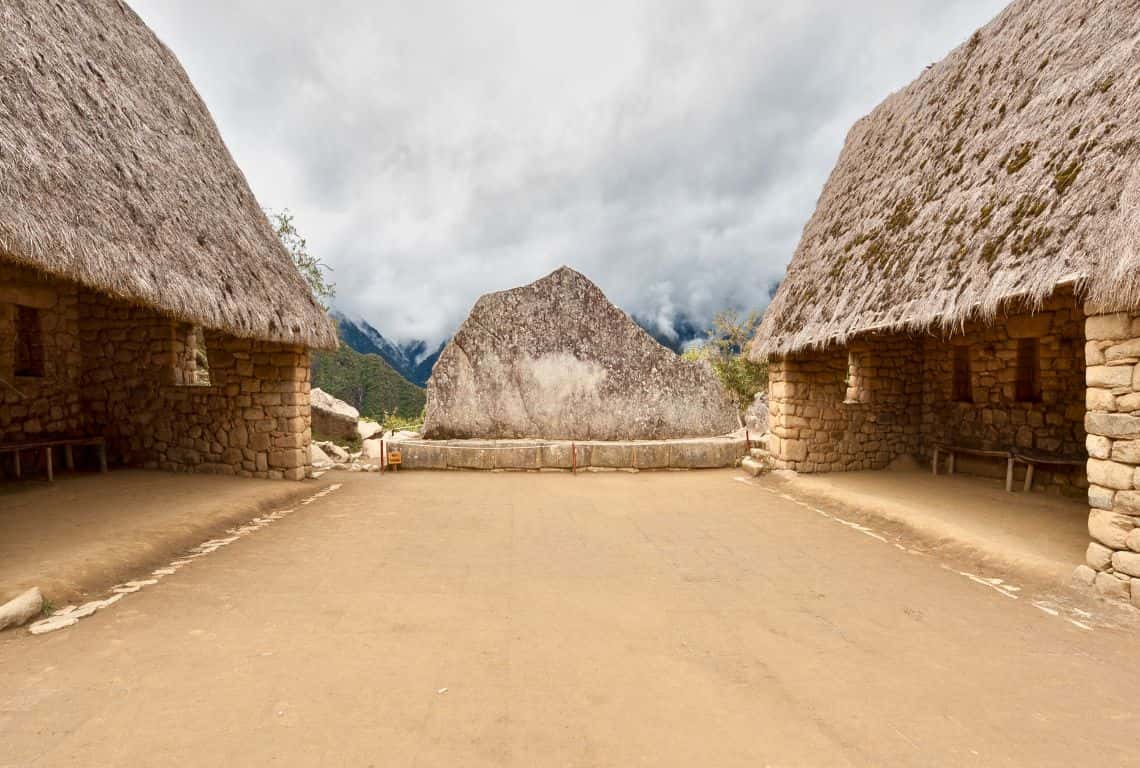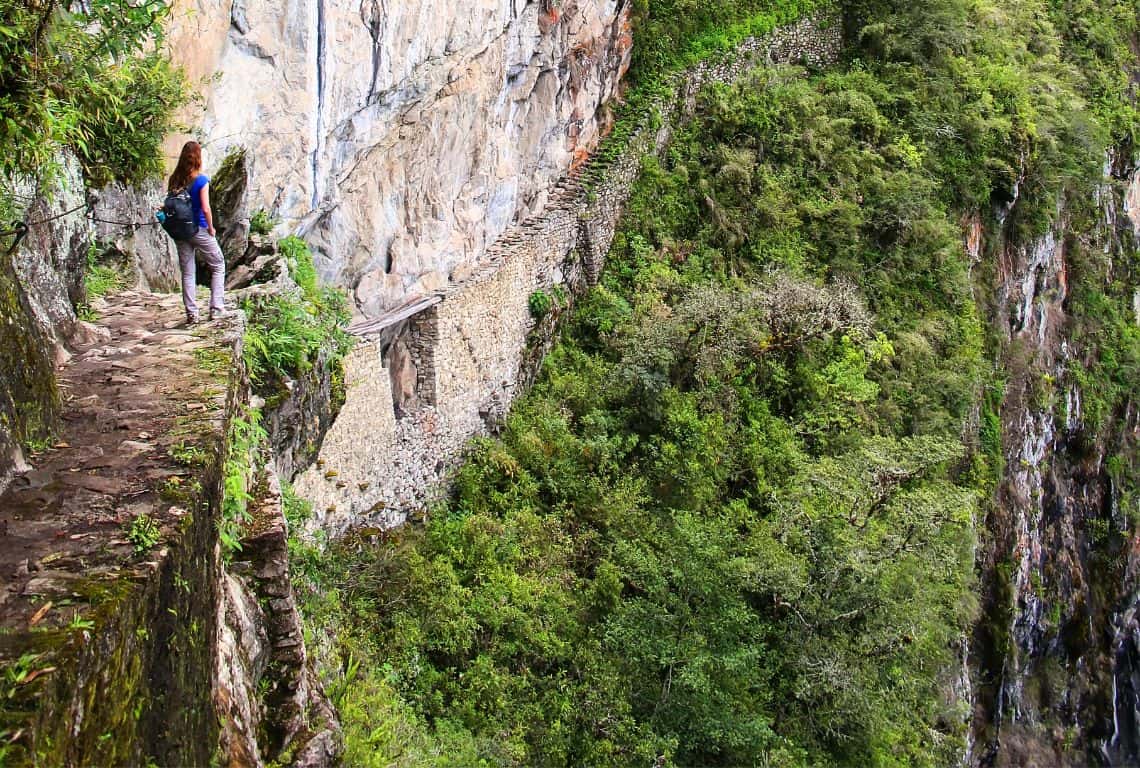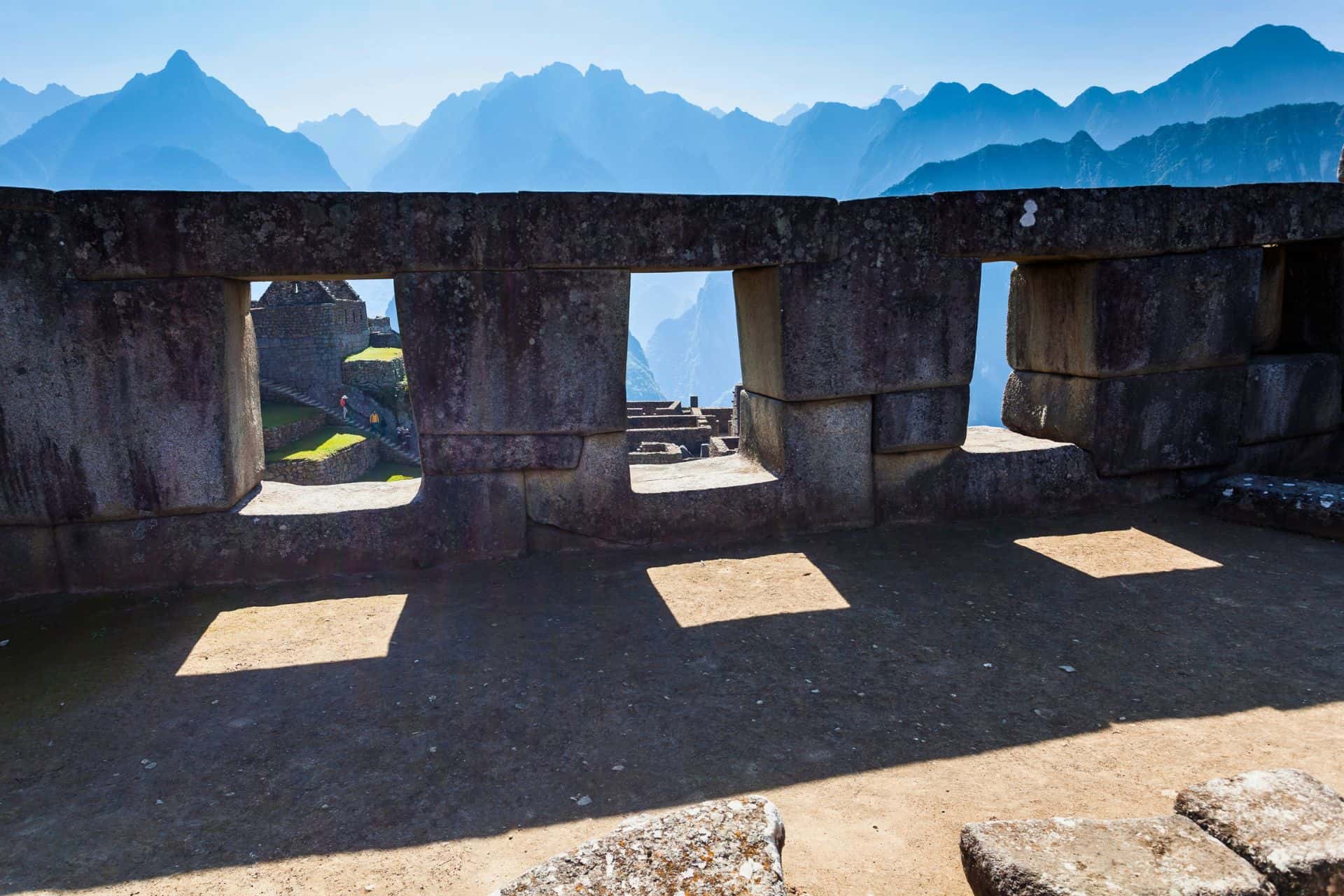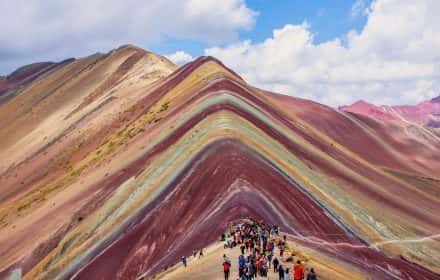This site uses affiliate links, meaning that if you make a purchase through our links, we may earn an affiliate commission.
Machu Picchu, a UNESCO World Heritage site located in Peru, is a stunning ancient Incan citadel perched high in the Andes Mountains. With its breathtaking views and awe-inspiring architecture, it is no surprise that Machu Picchu is considered one of the most popular travel destinations in the world.
For photographers, Machu Picchu presents an unrivaled opportunity to capture stunning images of this magnificent wonder.
From the panoramic views of the surrounding mountains to the intricate stonework of the citadel, there are countless photography locations at Machu Picchu that are sure to leave any photographer in awe.
In this blog post, we will explore some of the best photography locations at Machu Picchu, along with tips and tricks for capturing the perfect shot. So grab your camera, pack your bags, and join me on a journey to discover the best photography locations at Machu Picchu!
- 1. 9 Best Photography Locations at Machu Picchu
-
- 1.1. Capture the Classic View of Machu Picchu from the Guardhouse
- 1.2. Photograph Agricultural Terraces from the Urban Area
- 1.3. Photograph the Sacred Rock
- 1.4. Take a Short Hike to Photograph the Inca Bridge
- 1.5. Capture the Grandeur of the Temple of Condor
- 1.6. Hike to Machu Picchu Mountain to Get Stunning Views of the Inca City
- 1.7. Photograph the Details of the Temple of the Sun
- 1.8. Hike to Huayna Picchu for Breathtaking Views of the Inca Citadel
- 1.9. Catch the Stunning Shadows at the Temple of the Three Windows
- 2. Machu Picchu Photography Tips
- 3. Intrepid Scout's Tips on the Best Photography Locations at Machu Picchu
9 Best Photography Locations at Machu Picchu
Capture the Classic View of Machu Picchu from the Guardhouse
The Guardhouse is one of the most iconic and popular views of Machu Picchu and for good reason. The Guardhouse overlooks the citadel and surrounding mountains, offering a breathtaking panoramic view that showcases the site’s grandeur and beauty. This spot is particularly stunning in the morning, as the rising sun bathes the site in warm golden light.
Experiment with different angles and compositions to find the perfect shot, and consider using a wide-angle lens to capture the sweeping panoramic view.

Classic View of Machu Picchu near the Guardhouse / Best Photography Locations at Machu Picchu
Photograph Agricultural Terraces from the Urban Area
I was always fascinated by the impressive agricultural terraces at Machu Picchu, which were used for farming by the Incas.
These terraces offer interesting geometric patterns and lines that can create visually appealing compositions for photography.
I tried different locations and angles. For example, from above to capture the patterns and symmetry or from below to capture the death and the scale.
I came to the conclusion that the Urban Area located below the terraces offers the best vantage point for capturing this engineering marvel.

Agricultural Terraces / Best Photography Locations at Machu Picchu
Make sure to play with the depth. For example, use a shallow depth of field to blur the background and focus on specific details of the terraces. This can create a sense of depth and add visual interest to your photos.
Including people or a couple of llamas roaming around the terraces can add a sense of scale and perspective to the images.
The lighting conditions at Machu Picchu can change very quickly. For the best results, try to shoot during the golden hours of sunrise or sunset, when the light is soft and warm. Avoid shooting during the middle of the day when the light can be harsh and create strong shadows.

Agricultural Terraces / Best Photography Locations at Machu Picchu
Photograph the Sacred Rock
The Sacred Rock is a large stone formation where religious rituals were performed.
The shape of the rock was carved to follow the silhouette of a mountain located behind and in the distance.
It is one of the most photographed spots at Machu Picchu.

The Sacred Rock / Best Photography Locations at Machu Picchu
Take a Short Hike to Photograph the Inca Bridge
The Inca Bridge, located just a short hike from the Machu Picchu citadel, is a unique feature of Machu Picchu. It is a bridge carved into the side of a cliff.
This spot is particularly photogenic when framed with intricate stonework in the foreground.
A wide-angle lens will allow you to capture more of the surrounding landscape in your photos. This is particularly useful when shooting from above the bridge to show the full scope of the surrounding cliffs and the valley.
The Inca Bridge is an impressive feat of engineering, but including people in your photos can help give a sense of scale and emphasize the bridge’s size. Try taking photos when someone is standing at the end of the trail to show its size in relation to human figures.

Inca Bridge at Machu Picchu / Best Photography Locations at Machu Picchu
Capture the Grandeur of the Temple of Condor
The Temple of the Condor is one of the most unique and fascinating structures at Machu Picchu. It is located in the southeastern part of the site and was likely used for religious purposes by the Incas. The temple is named after the Andean condor, a sacred bird in Inca culture that symbolizes power, freedom, and the connection between the physical and spiritual worlds.
The temple is built into a natural rock formation that resembles the shape of a condor’s wingspan.
The Incas used the natural contours of the rock to carve out the shape of a condor’s head, complete with an open beak and sharp talons. Inside the temple, there is a carved stone altar that is shaped like a condor’s body. The altar is flanked by two stone slabs that are shaped like wings, which gives the impression that the condor is about to take flight.
The Temple of the Condor is a remarkable example of Inca stonework and engineering. The builders were able to create a structure that blended seamlessly with the natural landscape and incorporated the shape of a sacred animal into the design.
The temple is also notable for its acoustics, which are said to produce a unique echo that sounds like the screech of a condor in flight.
Photographing the Temple of the Condor can be a bit challenging since it is located in a narrow space. Make sure to use a wide-angle lens to capture the entire structure in your frame. A lens with a focal length between 10mm and 24mm can work well.
The temple is located in a shaded area, so the lighting can be a bit tricky.
Try capturing the temple from different angles to find the most interesting perspective. You can shoot from below to emphasize the height and majesty of the structure or from above to capture the intricate details of the condor’s head.
The Temple of the Condor is a beautifully carved structure, so make sure to capture the intricate details of the condor’s head and the altar. You can also try to capture the texture and patterns of the rock surface surrounding the temple.
The temple’s dark, shadowy environment can create a moody atmosphere that lends itself well to black-and-white photography. Try converting your images to black and white in post-processing to enhance the drama and contrast of the scene.

The Temple of Condor / Best Photography Locations at Machu Picchu
Hike to Machu Picchu Mountain to Get Stunning Views of the Inca City
Machu Picchu Mountain is a popular hiking spot that provides a panoramic view of the citadel with Huayna Picchu in the background.
The view from the summit of the montain is particularly stunning in the early morning or late afternoon when the light is soft and the shadows long.

View of Machu Picchu and Urubamba River / Best Photography Locations at Machu Picchu

Machu Picchu Citadel and Huayna Picchu / Best Photography Locations at Machu Picchu
Photograph the Details of the Temple of the Sun
The Temple of the Sun is one of the most important and impressive structures at Machu Picchu. It is constructed of finely cut and polished stones that fit together seamlessly without the use of mortar. It was likely used for religious and astronomical purposes by the Incas.
The temple is divided into two main sections: the Upper Temple and the Lower Temple.
The Upper Temple is a semicircular structure that was used for astronomical observations and features several windows that align with the solstices and equinoxes.
The Lower Temple is a rectangular structure that was used for religious ceremonies and contains several niches that may have held sacred objects or offerings.
The Temple of the Sun is a large structure, so using a wide-angle lens will allow you to capture the entire structure in your frame. A lens with a focal length between 10mm and 24mm can work well.
The temple is located on the eastern side of the site, so the best time to photograph it is during the early morning or late afternoon when the sun is lower in the sky. This will create a warm, soft light that can enhance the beauty of the temple’s stone surfaces.
A polarizing filter can help you reduce glare and reflections on the temple’s shiny surfaces, which can create a more contrasty and vibrant image.

Temple of the Sun / Best Photography Locations at Machu Picchu
Hike to Huayna Picchu for Breathtaking Views of the Inca Citadel
The Huayna Picchu hike is a challenging trek up a steep trail to an overlook with breathtaking views of the citadel and surrounding landscape.
This spot is particularly stunning in the early morning when the rising sun casts a warm light on the site and the surrounding mountains.
The Huayna Picchu hike is a popular activity for visitors to Machu Picchu, but it’s also a strenuous trek that requires a certain level of fitness and preparation. Here are some details and tips for the Huayna Picchu hike:
The trail is made up of steps and switchbacks, and there are some sections where you will need to use your hands to scramble up rocks. The entire hike takes around 2 hours to complete.
To access the Huayna Picchu trail, you will need to purchase a separate ticket in advance as only a limited number of hikers are allowed on the trail each day.
From the summit, you can see the entire site, as well as the surrounding mountains and valleys.
Use a telephoto lens. A telephoto lens will allow you to zoom in and capture detailed shots of Machu Picchu from afar.

View of Machu Picchu from Huayna Picchu / Best Photography Locations at Machu Picchu
Try shooting from different angles and perspectives to add interest to your photos. For example, you could shoot down at Machu Picchu from above, or capture the site from the side to show the surrounding mountains and valleys.
A polarizing filter can help reduce glare and improve the saturation and contrast in your photos. You can also experiment with graduated neutral density filters to balance the exposure between the bright sky and dark landscape.

View of Machu Picchu from Huayna Picchu / Things to Do at Machu Picchu
Catch the Stunning Shadows at the Temple of the Three Windows
The Temple of the Three Windows is a rectangular building notable for its three large windows that offer panoramic views of the surrounding mountains and valleys.
The temple was likely used for religious and ceremonial purposes, and it is thought to have been an important gathering place for the Inca elite.
The best time to photograph the Temple of the Three Windows is in the early morning. Experiment with different angles and compositions to create an interesting and dynamic image of the temple.

Temple of the Three Windows / Things to Do at Machu Picchu
Machu Picchu Photography Tips
Machu Picchu is a photographer’s paradise, with stunning vistas, ancient ruins, and unique cultural elements that make for unforgettable photo opportunities.
Take your time to capture the magical moments of your visit, from the misty morning views of Machu Picchu to the intricate stone details and cultural expressions that abound throughout the site.
Here are some photography tips for capturing the beauty of Machu Picchu:
- Plan for Optimal Lighting: Machu Picchu can have varying lighting conditions throughout the day, with the best lighting typically during the early morning or late afternoon when the sun is lower in the sky. Avoid the harsh midday sun, which can result in harsh shadows and blown-out highlights. Be prepared to adjust your camera settings and composition accordingly to make the most of the available light.
- Capture the Mystical Mist: Machu Picchu is often shrouded in mist and fog, especially during the early morning hours. Embrace this mystical atmosphere and use it to your advantage in your photos. The mist can create a sense of mystery and add an ethereal quality to your images. Experiment with different angles, perspectives, and focal lengths to capture the mist in creative and compelling ways.

Capture the Mystical Mist / Things to Do at Machu Picchu
- Highlight the Inca Stonework: The intricate stone structures and terraces at Machu Picchu are iconic and make for great photographic subjects. Pay attention to the details of the stonework, such as the precision of the joints, the carvings, and the unique shapes of the stones. Use different lenses and perspectives to emphasize the craftsmanship and architectural marvels of the Incas.
- Include People for Scale and Context: Including people in your photos can help convey the scale and grandeur of Machu Picchu. Capture fellow visitors exploring the site, local Quechua people in traditional attire, or even yourself in a self-portrait to provide context and a sense of scale to the immense ruins. People can also add a sense of storytelling and human element to your photos.
- Seek Unique Perspectives: Machu Picchu has been photographed countless times, so strive to find unique perspectives that showcase your own creative vision. Experiment with different angles, vantage points, and compositions to create visually interesting and unique images. Consider climbing to higher vantage points, using a wide-angle lens for sweeping landscapes, or getting up close with a macro lens to capture intricate details.

Seek Unique Perspectives / Things to Do at Machu Picchu
- Pay Attention to Composition: Composition is key to creating visually compelling photos. Use the rule of thirds, leading lines, and framing techniques to create balanced and visually appealing compositions. Experiment with different focal lengths, depth of field, and perspectives to create depth and visual interest in your images.

Pay Attention to Composition / Things to Do at Machu Picchu
- Capture the Details: Machu Picchu is filled with fascinating details, from the intricate carvings on the stone walls to the textures of the terraces and vegetation. Don’t overlook these smaller details, as they can add depth and character to your photos. Use a macro lens or get up close with your camera to capture these details in a unique and creative way.
- Be Respectful of the Site and Local Culture: Lastly, always be respectful of the site and the local culture when taking photos at Machu Picchu. Follow all rules and regulations, avoid climbing or touching the ruins, and be mindful of the spiritual and cultural significance of the site to the local Quechua people. Respect the privacy and wishes of local people if taking their photos, and be mindful of their cultural practices and beliefs.
Remember, the goal is not just to capture technically perfect photos, but to also immerse yourself in the experience of Machu Picchu and create meaningful and visually captivating images that tell a story and convey the awe-inspiring beauty and cultural significance of this ancient Inca citadel.
Intrepid Scout's Tips on the Best Photography Locations at Machu Picchu
- Time Your Visit: The best time to visit Machu Picchu for photography is during the early morning or late afternoon when the light is softer and more favorable. This will create a warm, soft light that will enhance the beauty of the stone structures. It is known as the golden hour.
- Use a Wide-Angle Lens: A wide-angle lens is ideal for capturing the vast landscapes and intricate stonework of Machu Picchu. A lens with a focal length between 10mm and 24mm can work well.
- Be Mindful of Other Visitors: Machu Picchu is a popular tourist destination, and it can be crowded with visitors. Be patient and wait for a clear shot, or find an angle that minimizes the presence of other people in your photo.
- Consider Composition: Machu Picchu is surrounded by the stunning Andes mountains and lush vegetation. Use the surrounding landscape to frame your photos and create a unique composition.
- Experiment with Angles: Try capturing the structures of Machu Picchu from different angles to find the most interesting perspective. You can shoot from below to emphasize the height of the structure or from above to capture the intricate details of the carving.
- Focus on Details: Machu Picchu is known for its intricate stonework and details, so make sure to capture these elements in your photos. Zoom in on the carvings and patterns in the stonework to create a striking image.
- Bring Extra Batteries and Memory Cards: You don’t want to run out of battery or storage space when you’re taking photos at Machu Picchu. Make sure to bring extra batteries and memory cards to ensure that you can capture as many photos as you want.
More Helpful Posts About Peru:
Best SELF-GUIDED MACHU PICCHU TOUR (Explore 11 Marvels of Inca Citadel)
HIKING to Machu Picchu from Aguas Calientes, Peru (Step-by-Step Guide)
7 Coolest Day Trips from Cusco, Peru (with Maps and Photos)
15 Terrific Things to Do in Lima, Peru (+ BONUS: Complete Guide to Lima)
10 Best Things to Do in Cusco, Peru (FOR EVERY BUDGET)
7 Fun and Cool THINGS to DO in AGUAS CALIENTES (Besides Machu Picchu)
Did You Find This Useful?
Why Not Save Best Photography Locations at Machu Picchu to Your Pinterest Board!


Now, It Is Your Turn, I Would Like to Hear Back from You!
Are you planning your trip to Machu Picchu?
Please let me know! Drop me a quick comment right below!
Click on any of the images below to get inspired and to help you with the planning process for your trip to Peru!





